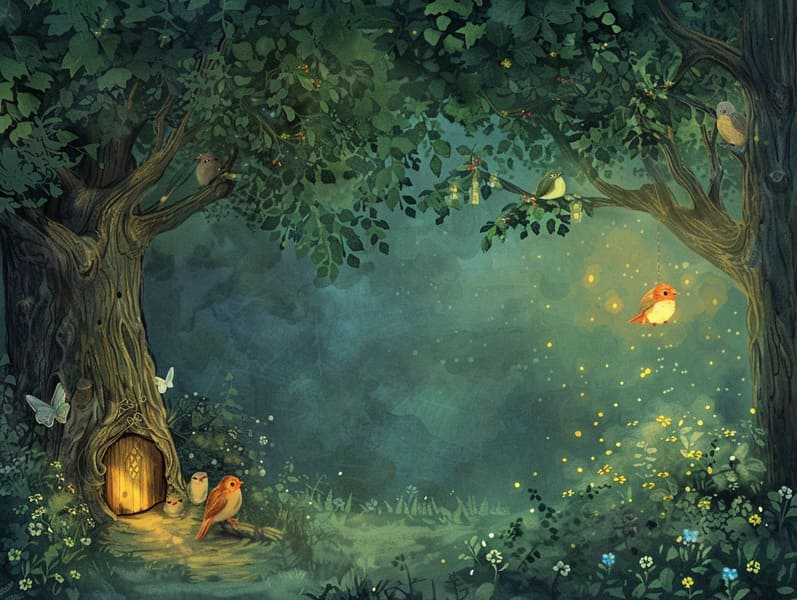The Genesis of Grimm's Fairy Tales with the Everlasting Loveliness.

Fairy tales for kids have ancient roots. These narratives have been narrated from one generation to the next well before they were ever published. They developed from a variety of civilizations, including American traditions. They were initially told among older generations, often carrying themes and messages mirroring the societal norms and beliefs of the time.
The renowned Brothers Grimm, the two Grimm brothers, were among the first to compile and release many of these beloved fairy tales. Their collection, "Grimm's Story Collection," included classics like "Ashenputtel," "The Bread Crumb Trail," and "Schneewittchen," which have since become classics in the world of traditional fairy tales. Similarly, Andersen's delightful tales, such as "The Mermaid's Tale," and "The Little Duckling," have floated into hearts worldwide, solidifying their place in the pantheon of iconic fairy tales.
Even though they are old, these stories remain as significant as ever, especially as children's night stories. These whimsical stories are now available in diverse formats, including artistically illustrated books, delightful animations, and web-based fairy tales.
Their enduring popularity can be traced to several charming aspects:
Life Lessons: Traditional fairy tales often share important moral lessons. Stories like "The Shepherd Boy and the Wolf" teach the benefit of truthfulness, while "The Race of the Tortoise and the Hare" underline the values of tenacity and humility. These narratives offer little ones clear distinctions between virtue and vice, forming their moral compass in a subtle yet meaningful way.
Kindness and Comprehension: Old fairy tales frequently illustrate beings facing struggles and tests, provoking young readers to connect with their struggles and support their triumphs. For instance, "Beauty and Her Beast" shows us the significance of valuing inner qualities to understand the real person of a individual, promoting warmth and insight.
Cultural Understanding: Many traditional fairy tales are saturated in the cultural contexts from which they were born. Immersing in these stories can provide enlightening views into different ways of life, developing a sense of global understanding and knowledge.
Fantasy and Imagination: The mythical elements in old fairy tales—magical spells—unleash children’s creative thoughts. These fairy tales carry readers to otherworldly realms, engendering fantasy dreams and a sense of fascination that persists a lifetime.
Old fairy tales are not only enchanting but also edifying. They serve as mesmerizing tools in developing various cognitive and affective skills in young ones. When classic fairy tales are recited, they foster speech development by showing new linguistic elements and sophisticated sentence structures. This practice also develops auditory perception and concentration, as the young listen intently, prepared to see what happens next.
Furthermore, discussing the themes and characters of fairy tales can enhance thinking skills and cognitive skills. The young are educated to identify patterns, predict happenings, and grasp cause and effect. These discussions also further children verbalize their thoughts and feelings, strengthening their emotional intelligence.
In today’s electronic age, the proliferation of free fairy tales online has made these stories more within reach than ever. Websites and online apps supply broad selections of bedtime fairy tales that can be explored or listened through anytime, anywhere. Fairy tales told out loud are particularly common, giving an interactive method for young readers to relish these charming tales. Audio stories and read-out-loud videos move characters and settings to life, often supplemented by entrancing harmonies and tunes that enrich the narrative experience.
The lasting allure of traditional fairy tales lies in their ability to evolve to contemporary times while staying true to their main lessons. Contemporary modernizations of these fairy tales often feature more varied figures and modern settings, making them meaningful to today’s audience. However, the central morals of braveness, empathy, and impartiality remain unchanged, continuing to affect young listeners of all ages.
Fairy tales also offer a sense of calm and closeness. They impart a orderly narrative with a transparent beginning, middle, and end, often concluding with the culmination of conflicts and the triumph of rightness over wrongness. This regularity can be relieving for kids, making available a sense of steadiness in an unpredictable world.
Old fairy tales continue to entrance and instruct new generations, maintaining their delight and significance in modern society. As children's night stories, they yield a perfect blend of charm and understanding, here backing moral values, empathy, and creativity. The prevalence of online fairy tales and the sought after status of fairy tales read aloud ensure that these timeless fairy tales remain reachable to new generations.
By retaining and sharing these fairy tales, we continue to exalt the rich tapestry of storytelling and cultural heritage. Whether you are enjoying a vibrantly illustrated book, enjoying a digital library, or listening via an spoken story, the radiance of children's fairy tales is always within reach. These tales remind us of the persistent presence of stories and its ability to bring us together across eras and regions.
Whether you are delving into a beautifully illustrated book, exploring a online library, or listening through an spoken story, the spell of old fairy tales is always within reach.
These stories highlight of the undying influence of fairy tales and its ability to gather us across generations and cultures, forging a link that charms and informs alike.